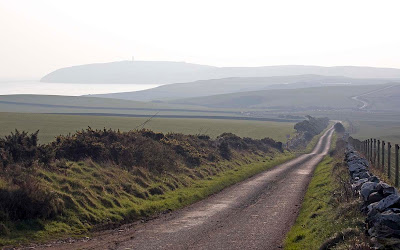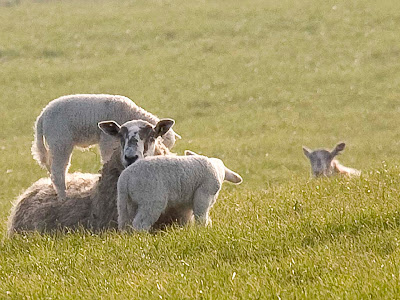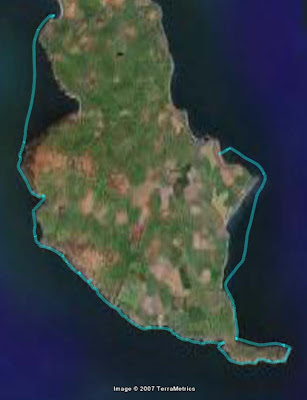
The Mull of Galloway.
Unfortunately there was not space in Ocean Paddler for the fact box to accompany the article: "Myths and Tides of the Mull" part one of a Rhinns of Galloway Trilogy. I will make sure there is room for the fact box in one of the remaining two articles. In the meantime, here is some information to help those planning a trip to this fantastic location.
The Mull of Galloway Essential Information.Distance: 27km day trip.
Launch site: Drummore: NX141363. There is no toilet at the car park so stop at Ardwell NX109453 en route.
Landing site: Port Logan NX494094.
Getting there: From Glasgow, head south for Stranraer on the M77, then the A77. through Stranraer. Leave A77 on A716 for Ardwell then B7065 to leave shuttle car at Port Logan. 100 miles allow 2hours 30mins. Then take B7065/B7041 to Drummore 4.5 miles allow 15 minutes. If coming from the south or the east, head for Dumfries then west for Stranraer on the A75. Just before Stranraer, take the B0784 then A716 for Ardwell then B7065 for Port Logan. Dumfries to Port Logan is 60 miles allow 2 hrs.
Accommodation: For Hotel, B&B and self-catering accommodation:
www.visitscotland.com. New England Bay Caravan Club Site NX120424, tel 01776 860 275, has beach access for kayaks.
Local weather forecast: BBC Radio Scotland (94 to 95 FM, 810 MW) Outdoors conditions forecasts are broadcast at 19.12 Monday-Friday, 06.58 and 18.58 on Saturday and 06.58 and 19.58 on Sunday.
Tidal constant: Mull of Galloway +0035 HW Dover; Drummore: +0045 HW Dover.
Tidal streams: Tidal stream information here that differs from the pilots is from personal observation and discussion with local fishermen. The pilots show that well south of the Mull of Galloway the E going stream (flood) begins at -0545 Dover and the W going stream (ebb) begins at +0020 Dover but close inshore, where kayakers will be, the east going stream begins about +0530 HW Dover and the W going stream about -0130 HW Dover. Spring rates exceed 9km/hr. From Port Kemmin to the Mull there is an E going eddy close inshore during the W going ebb, from about +0120 HW Dover. The interface with the main west going stream can be very disturbed.
To the west of the Rhinns of Galloway and close to shore, the S going stream (flood) begins +0425 Dover, the N going stream (ebb) begins -0135 HW Dover. There are overfalls at frequent places and after half tide (on both flood and ebb) counter eddies form close inshore. Spring rates at headlands exceed 12km/hr.
Tides on the day (24/03/2007): Our trip was midway between springs and neaps and we arrived off Lagvag, the east point of the Mull, at -0145 Dover. Note that Cooper and Reid suggest arriving slightly earlier than HW Liverpool (about HW Dover) if you do this, you will not round the Mull at slack water and you will face stronger eddies on the north part of the trip.
Warnings: This can be a serious trip if there is any wind against tide; here is a selection of descriptions from the pilots: one of the most dangerous points on the British coastline; heavy and violent race; the race at the Mull of Galloway is violent; passage can be hazardous on an outgoing tide in SW winds above force 4 and should not be attempted; very heavy seas off the Mull. Check tidal information with original sources and take account of conditions on the day.
Danger Area: Luce Bay is an active bombing range. If you keep inside the yellow buoys you should be well clear but if in doubt phone the range on 01776 888741.
Maps: OS Landranger 1:50,000 sheet 82; Imray Chart 1:150,000 sheet C62
Books: West Coast of Scotland Pilot, UK Hydrographic Office
West Coast of England and Wales Pilot, UK Hydrographic Office
The Yachtsman’s Pilot Clyde to Colonsay, Martin Lawrence
Firth of Clyde inc. North Channel, Solway Firth & Isle of Man, Clyde Cruising Club
Blazing Paddles, Brian Wilson
Scottish Sea Kayaking, Cooper and Reid
Useful website:
http://seakayakphoto.blogspot.com/search/label/Mull%20of%20Galloway24/03/2007

















































